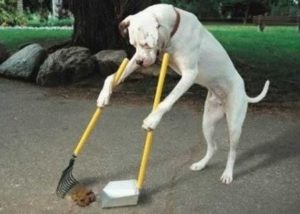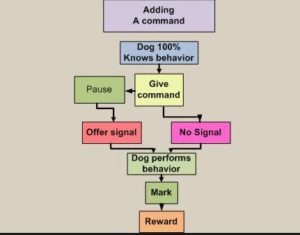Why Dog Marker Training is the Best
What is dog marker training and how can it help you train your dog? Dog marker training is a type of dog training in which you literally train your dog with a marker signal. The marker signal your dog will identify this marker as a sign that they’re doing the right thing. A marker can be anything from a word to a clicker, or a whistle. The use of the marker is usually followed by giving the dog a simple reward. The reward can be a a treat, a walk, or access to their favorite place.
Why Choose Dog Marker Training?
Marker training is the most effective type of dog training. Marker training helps dogs learn new behaviors. Your dog wants to please you. Using a marker just makes the training easier and helps dogs love learning new behaviours, rather than disliking them. They will not only remember behaviours learned after years of first learning them, but they will become aware of their own learning process.
Why Use a Dog Marker?
Sometimes food and treats are simply not enough. Using a marker makes the learning process much more stable because of its clarity and precision. This means that your dog will learn new behaviours in a quicker and clearer way, and repeat them when you as them without hesitation after you use the marker.
 Everything You Need to Know About Dog Marker Training
Everything You Need to Know About Dog Marker Training
You will not have to use a marker forever
You will only have to use a marker when you want your dog to learn a new behavior. The marker is simply a way of communicating with your dog that will sign them that they will be rewarded for performing a certain behavior.
You will not have to use food forever
Like markers, you will only have to use food until the behavior has been learned by the dog. Dogs are pack animals. They want to conform to the leader of the pack. Hopefully the leader is you. Rewards are just short term crutches to help learn the behavior. The main goal is for your dog to be able to perform certain behaviors without the need of a marker or food, unless they are still learning these.
You will have to teach your dog the command after  they have learned the behavior
they have learned the behavior
This might seem strange, but you will have to teach your dog the command only after they have learned the behavior. The name of the behavior is nothing but an indicator of when to perform it, in the dog’s mind.
Everyone who is in contact with the dog can train with a marker
Something very practical about marker training is that anyone in your household or family will be able to train your dog. With traditional training, dogs will only listen to one dominant voice. With marker training, dogs will perform behaviors with anyone who will use a marker.
It’s okay to make mistakes
This method allows you to make mistakes. We’re not all Cesar the dog trainer. Marker training is very forgiving. It might take longer, but your dog will learn all of the behaviors effectively anyway.
Is this Technique More Effective in House Pets or Less Stubborn Breeds?
I’d be more likely to strongly prefer clicker training for more difficult dogs. If you had a super eager to please, not-at-all-stubborn, outgoing and resilient pet dog, you can get away with training with all sorts of different methods and the dog will probably still learn. If you have a dog that’s not driven to please people or doesn’t have a solid relationship with the trainer, that’s when it’s really important to work with what does drive the dog, in a precise and consistent way. Clicker training is an approach that relies primarily on food as a reinforcer, which makes it appropriate for any food-motivated animal (so pretty much all animals). It’s used to teach everything from zoo animals to dolphins to dogs to cats to chickens.
If you haven’t used clicker training before, my advice is to watch some videos and practice on a person first, to get your timing right. It can be a little awkward at first, getting timing right while you juggle treats, a clicker, a leash, and keep an eye on the dog. All you need to practice is a cooperative human, some simple behavior you want to “teach” (e.g. sit in a chair, pick up a phone, turn a doorknob), and some sort of little “rewards” to give to the human after you click. In some past intro clicker classes I’ve seen people use skittles, m&ms, and dried lentils (obv we don’t actually eat the last one…it’s just a symbol for practice).
Are There Any Things to Keep in Mind for Training Ex-Research Dogs, Those in Group Housing, and/or Beagles?
Ex-Research Dogs
Depending how they’re kept, they might not know how to deal with regular settings like grass, stairs, homes, etc. everything new will be exciting and possibly overwhelming. When you start training, start in a totally controlled environment where she’s acclimated & comfortable, with no distractions at all. Going out in a field outdoors will be a great training location for some dogs, but probably not for this one. Depending on her past, she might not be resilient to coping with new loud noises, so use a quieter clicker (e.g. iClick clicker) or soften the click noise it by putting some putty on the clicker tongue, and make sure you charge it (demonstrate repeatedly that click predicts food) before trying to use it to train anything. She may have been fed a limited diet for most of her life, so make sure you choose food reinforcers that won’t upset her belly. Use a portion of her regular meals if she gets excited for kibble. Tiny little bits of plain boiled chicken breast (seriously. TINY) is a good option for higher value treats. Keep training sessions short and constructive. ~5 minutes at a time is fine.
Group Housing
Separate her from other dogs if possible for training (if that’s not stressful for her). Ideally get her in an area with solid walls so she isn’t seeing, smelling, and hearing other dogs the whole time. Make sure she has some exercise and a chance to relieve herself first, and then a chance to drink water and settle for a few minutes before you try to do any training.
Beagles
Clicker training works on spiders and fish (using a flash of light as the click), so it will work on a beagle. Use food as the reinforcer. Give them lots of opportunities to use their noses. Allow time to sniff before and after training. Let her finish sniffing you before you try to interact with her. Let her finish sniffing the training area before you try to get her attention. Lure-reward training is typically easy with them because their noses naturally want to follow the food, even more so than other breeds
How to Implement Dog Marker Training
The key is to have your dog associate the marker (or word) with a reward.
Say the word (or click the clicker).
Quickly give your canine a treat.
Use the marker when he is sitting down.
Use the marker when he is distracted and appears not be be paying attention
Repeat when he/she doesn’t expect it.
Do it 10-15 times throughout the day for a few days
Save a part of dog food from your dog’s supper and/or breakfast to do a couple of rounds without over encouraging him!
You are done when you can tell your dog gets energized when he hears the sound and before you give him a treat!
Once the marker is ingrained in your dogs brain you can use it as a signal immediately after your dog does what you want him/her to do. This makes teaching dog tricks or behaviors much easier.
Use Marker Training to Clip Your Dog’s Nails
Sit next to your dog and when she looks at the clippers, click and reward. Until she knows that: looking at clippers = reward. Now make her touch it with her nose. Until she knows: touching = reward. Build this until you can pet her with the clippers.
Focus especially on the feet. Touch her feet with the clippers, hold your hand still. And always click, remove the clippers and reward. Built up the time you can leave the clippers on her feet. That wiggle them around on her feet until you’ll be comfortable clipping just ONE nail. Do the other one tomorrow. Maybe two the day after and so on. Soon she will be used to the clipping and you won’t have any problems.
Pingback: Two of the Easiest Dog Tricks - Small Animal Planet
Pingback: The Best Dog Grooming Glove - Small Animal Planet